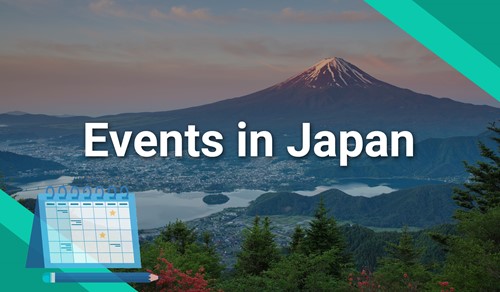How to Survive Japanese Summer and Prevent Heatstroke

This page contains affiliate links.
In Japan, summer is not only characterized by high temperatures but also high humidity, which results in a number of people suffering from heatstroke every year. In this article, we aim to assist you in identifying the health risks linked to summer in Japan, providing effective strategies to avoid these circumstances, and offering guidance on handling severe heat-related issues. Heatstroke is a serious condition that can have severe consequences if not identified and treated promptly. It is important to be able to recognize the signs of heatstroke to ensure a better chance of a full recovery.
Heatstroke Symptoms

Early symptoms of heatstroke include dizziness, light headedness, stomach or muscle pain, cramps, and nausea.
If any of these symptoms are observed, it is crucial to immediately move the affected person to a cool environment, preferably with air conditioning. Their clothing should be loosened or removed, and cold water or ice should be applied to help lower their body temperature. If possible, it is recommended to have the person consume a beverage such as an Oral rehydration solutions (ORS).
Heatstroke can progress to more severe stages, presenting with additional alarming signs and symptoms. One such symptom is abnormal perspiration, where sweat may either become excessively profuse or, more commonly, cease altogether. This is accompanied by dry, red skin and often an elevated body temperature.
Individuals suffering from heatstroke may then exhibit unresponsiveness, difficulty walking in a straight line, or impaired motor functions. In severe cases, they may even find it impossible to consume water. These advanced symptoms indicate a critical condition, and it is essential to immediately contact emergency services.
Similar to milder cases, the affected person should be moved to the coldest possible area and treated with ice as described earlier. If feasible, they should be given small sips of water. Prompt medical assistance improves their chances of recovery.
How to Prevent Heatstroke

To ensure the safety of yourself and your loved ones during the scorching Japanese summer, it is crucial to take preventive measures against heatstroke and other life-threatening heat-related conditions. Here are some key tips to follow:
1. Stay informed
Stay updated on weather reports and pay attention to the heatstroke index, especially if you plan to engage in strenuous physical activities. Being aware of the current conditions can help you make informed decisions and take necessary precautions.
You can check Heat Stroke Index from Ministry of the Environment Government of Japan.
2. Dress appropriately
Opt for loose-fitting, breathable clothing in the humid and sticky heat of Tokyo's summers. Choose lighter colors that reflect light and help keep you cooler. Natural fabrics like cotton and linen are ideal for wicking away sweat. Additionally, consider Japanese brands that offer clothing specifically designed for the challenging conditions of Japanese summers.
3. Stay hydrated
Drink plenty of fluids throughout the day, even if you don't feel thirsty. Water is the best option for hydration, but you can also include electrolyte-rich drinks to replenish salts lost through sweating. Solutions like OS-1, a popular oral rehydration solution in Japan, are widely available at drugstores in both jelly and drink form, and are typically kept chilled for convenience and effectiveness.
4. Seek shade and cool environments
Take breaks in shaded areas or air-conditioned spaces to give your body a chance to cool down. If you're outdoors, try to schedule activities during cooler parts of the day, such as early morning or evening.
5. Utilize cooling devices / Carry heatstroke prevention candies
Japan offers a variety of gadgets designed to prevent heatstroke. Click here to see Japanese gadgets.
6. Use Sun Protection
Apply sunscreen with a high SPF to protect your skin from harmful UV rays. Wearing a wide-brimmed hat and sunglasses can also provide additional protection.
7. Pace Yourself
Avoid overexertion in hot weather, especially during outdoor activities. Take regular breaks, listen to your body, and rest when needed.
Responding to Heatstroke: What to Do in an Emergency

When heatstroke is suspected, it is necessary to provide appropriate first aid. If the person is "unconscious or not clearly conscious," immediately call for an ambulance 119. Additionally, it is important to administer on-site first aid while waiting for the ambulance to arrive.
On-Site First Aid
Whether you have called for an ambulance or not, prompt measures are required at the scene. Regardless of the symptoms or severity, when heatstroke is suspected, it is crucial to move the person to a cool location, cool their body, and promptly replenish fluids and electrolytes. Note that fluid intake should only be encouraged if the person is able to drink on their own.
1. Move to a Cool Location and Provide Oral Rehydration Solutions (ORS)
Guide the person to a cool place, such as a shaded area with good airflow or preferably an air-conditioned room. Have the person lie down and rest. Elevating the legs by about 10cm can improve blood flow to the heart, increase blood pressure, and enhance blood flow to the brain.
2. Cool the Body
Remove excess clothing and loosen tight belts, ties, and undergarments to allow heat dissipation from the body. Apply cool water to exposed skin and use a fan or a handheld fan to promote cooling. If available, place ice packs or similar items on the sides of the neck, under the arms, and the front of the upper thighs near the groin area to cool the major blood vessels close to the skin.
If you have ice packs or similar items, apply them to the sides of the neck, under the arms, and the front of the upper thighs near the groin area to cool the large blood vessels that are close to the skin.
3. Hydration and Electrolyte Replenishment
If the person is conscious and alert, give them a cold beverage containing electrolytes in appropriate amounts. ORS are optimal for replenishing electrolytes lost through sweating. Sports drinks contain more sugar and less salt, so it is recommendable to take ORS when a person has the symptom of heatstroke.
Note: If the person's response to stimuli is abnormal or if they are unresponsive (have impaired consciousness), avoid forcing them to drink fluids as it may lead to the liquid entering the airway. If the person experiences nausea or vomiting, it is not appropriate to give them fluids orally, and medical intervention such as intravenous therapy may be necessary.

If a loved one is already showing symptoms of heatstroke, it is crucial to act quickly while remaining calm. The first step is to call emergency services. In most countries, the appropriate number to dial is the emergency hotline, such as 911 in the United States, 999 in the United Kingdom, or 112 in many European countries. Provide the necessary information about the heatstroke situation and follow their instructions.
>> Emergency Telephone Numbers in Japan
If you are in Japan, dial Emergency Medical Services at 119. While English-speaking operators may not always be available, it can be helpful to know a few key words. Use phrases like "kyu-kyu-sha" (ambulance), "nechusho" (heatstroke), and "jyusho" (address). Make sure you know your location and provide it accurately. If you are in a densely populated area, you may also seek assistance from a koban or police box. Inform them about the heatstroke situation using the term "nechusho," and they can provide further guidance and support, including translation assistance and directing the ambulance to your location.
Please note that while the information provided is based on general knowledge, it is important to seek immediate medical assistance and follow the guidance of healthcare professionals in cases of heatstroke.















